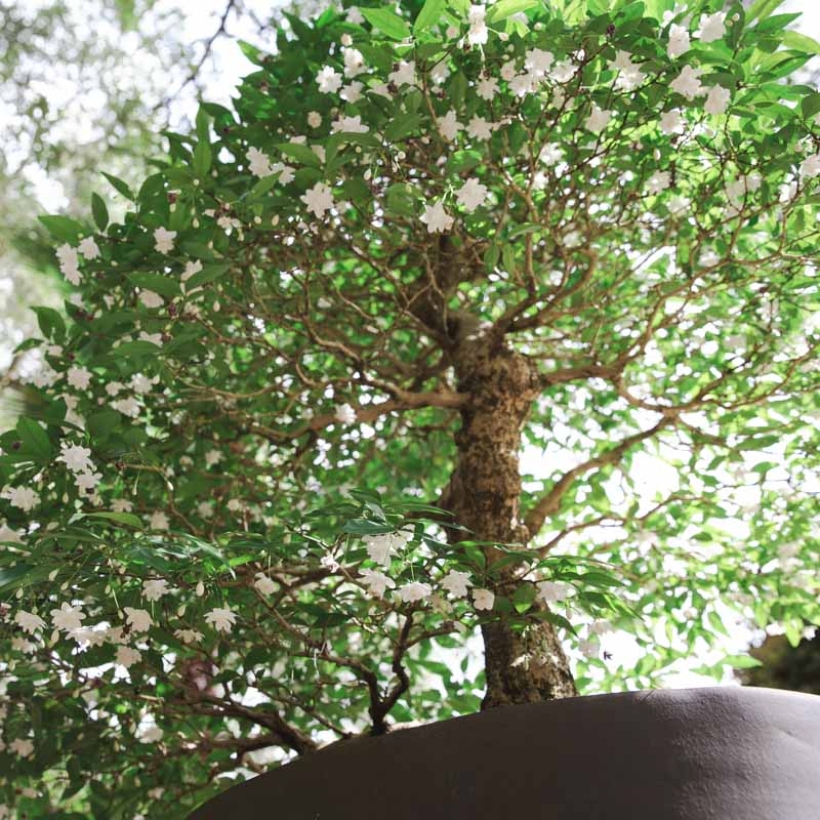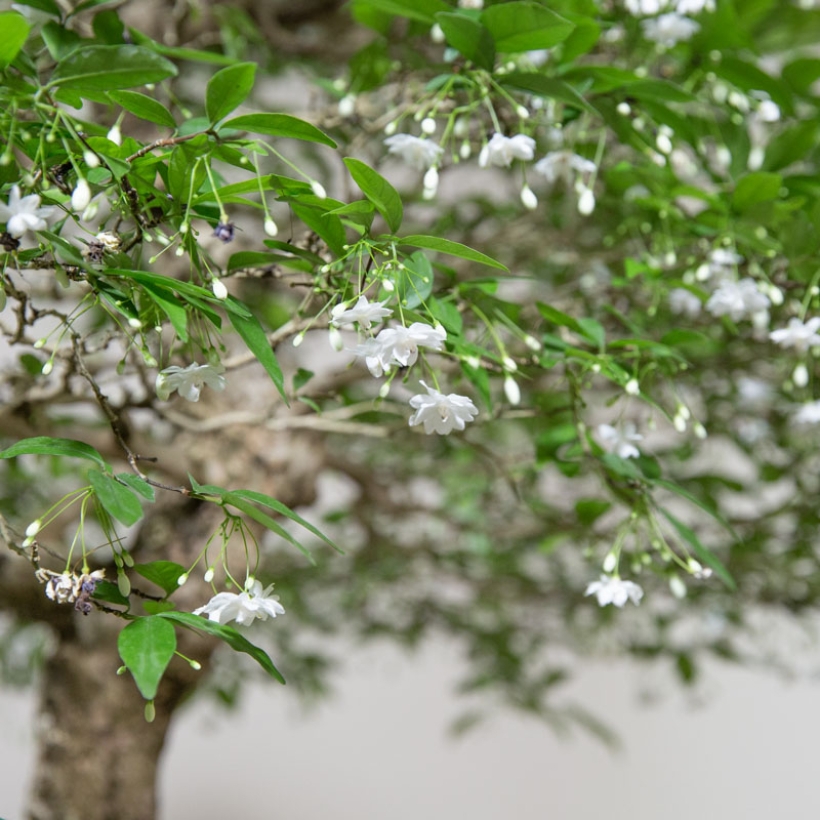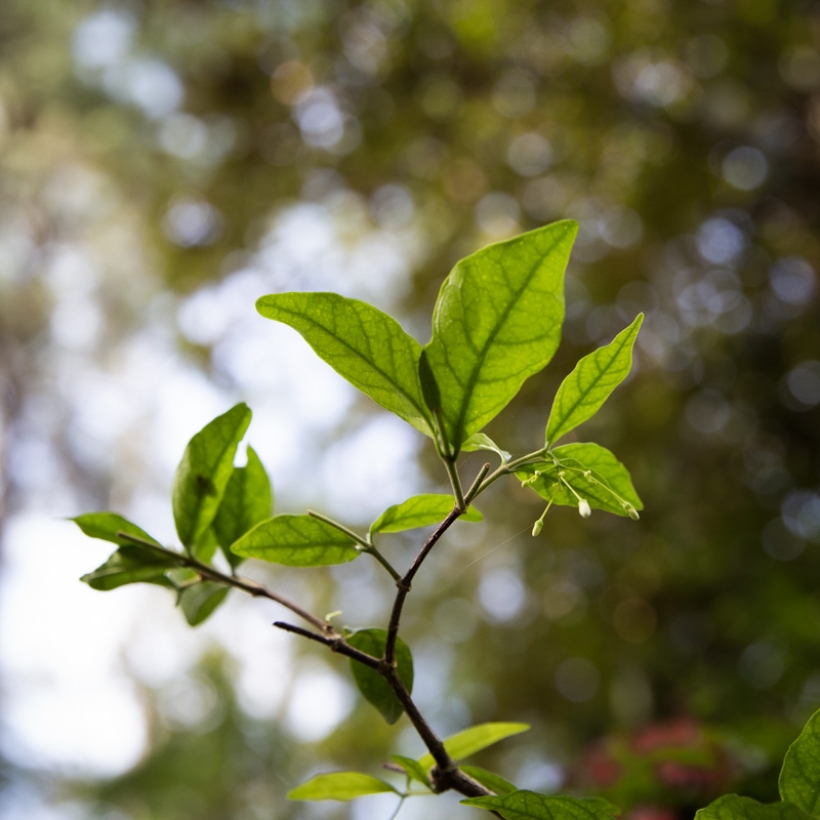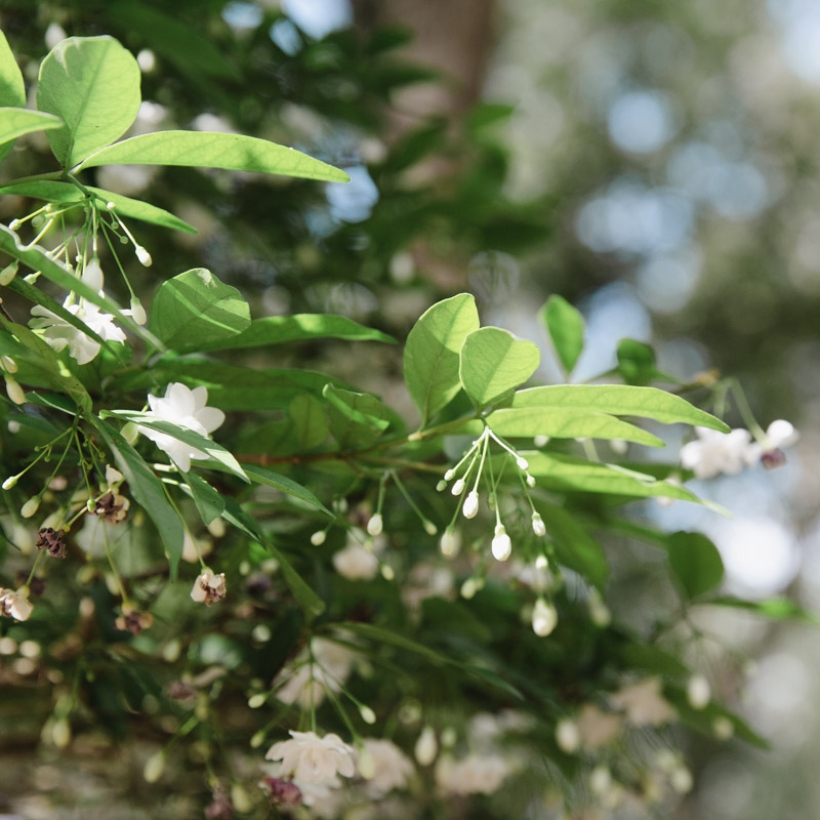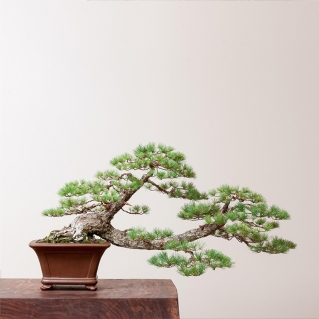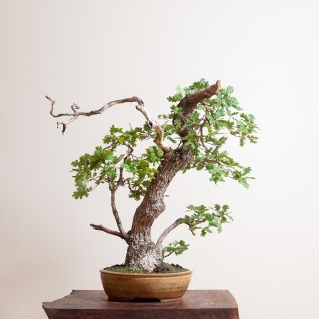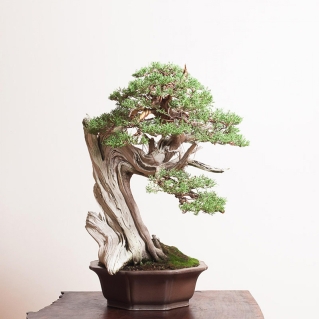Water Jasmine Bonsai
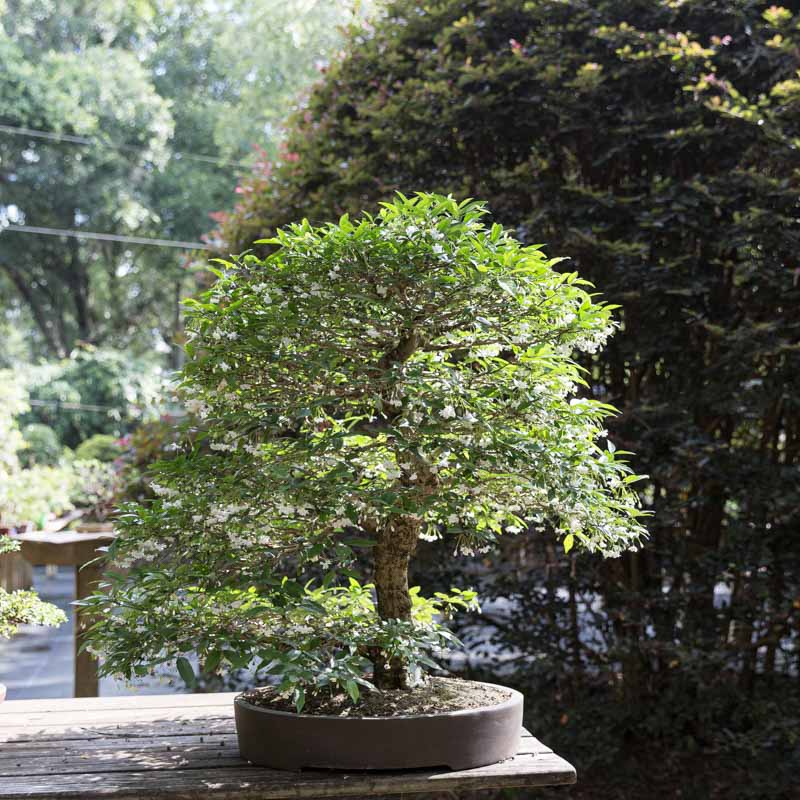
General Information
Philippine water jasmine—Radia religiosa—is also known as water plum. However, it is best known as water jasmine.
It's an all-around great tropical tree, native to tropical regions of the world, such as Asia, Thailand, and Malaysia.
Water jasmine is most known for its:
● Pendulous flowers that hang upside down
● Ability to propagate and ramify well
● Incredible fragrance; and
● Lighter color in the bark
The trees have great growth patterns and are popular for beginners and well-established bonsai professionals alike because they're very forgiving.
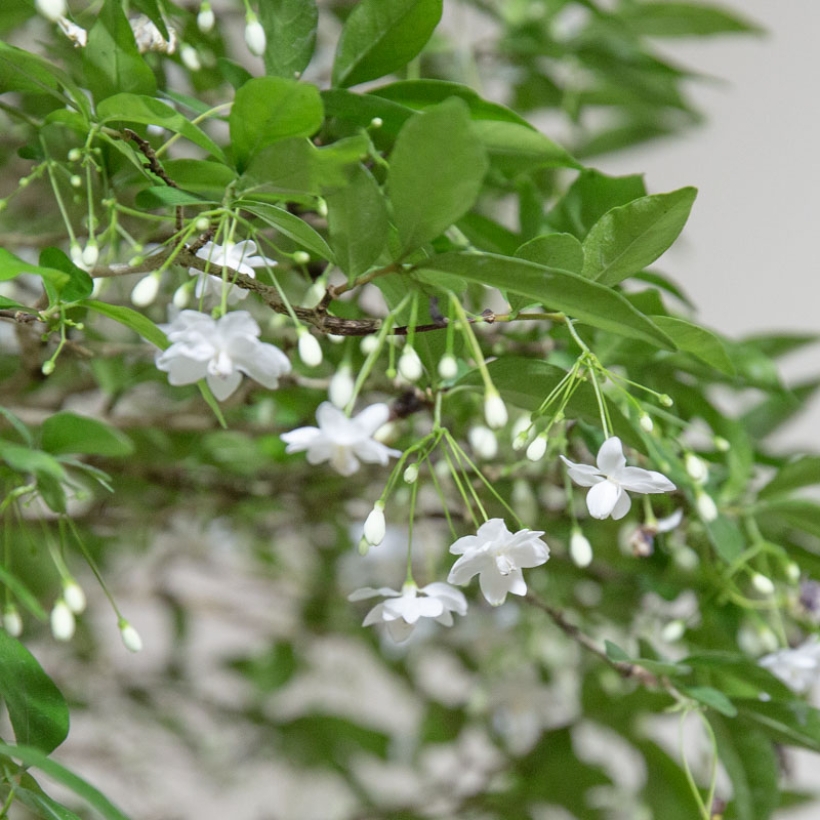
Caring for Water Jasmine Bonsai
Watering
Water jasmine, even in higher clay-based soil content, will need to be repotted nearly every year, which illustrates how much water they need as a growing tree.
Watering across the top part of the canopy may cause too much water within the interior and may ruin your flowers.
Stick to primarily watering in the pot—about twice a day, even if you have less well-draining soil.
Water jasmine bonsai drink a lot of water, so you want good saturation all the way around so it doesn’t create a dominant part of the root system within the pot that you can’t see.
Sun Exposure
Water jasmine needs full sun, all the time. They take the sun incredibly well, which helps with leaf reduction and pest reduction.
The full sun makes the water jasmine thrive. To keep it healthy, you will need to rotate it if it's getting more sunlight in one area of the tree than another.
Water jasmine grows larger leaves if they're not receiving sufficient sunlight.
The tree will typically grow disproportionately if the light is not properly dispersed evenly.
Temperature
Water jasmine is a tropical broadleaf evergreen, meaning this tree can survive well in temperatures no lower than 40℉ to 45℉ temperatures. The five degree buffer is there because anything below 40℉ is a risk.
You'll need to keep your temperatures above 60 degrees during the day and at night for your plants to thrive.
Fertilizing
Jasmine bonsais are fast metabolizers and will benefit from supplemental nutrition with fertilizing.
The strength of the fertilizer needed may depend on:
● Needs of water jasmin
● Environmental conditions; and
● The part of the world you are in
Pruning
Water jasmine bonsai trees heal very well, likely better than most tropicals. If you wound seal it (i.e., a duct seal) and then keep it dry, they will heal incredibly well.
Water shoots or sprouts on the cut sides of a tree are a normal part of the healing process.
Remember, water shoots:
● Should be pinched off while they are still green
● Typically, shoot up into the air when they become brittle
● Need to be cut off only if the wound is healed
Young water jasmine trees can be trimmed to create movement or allowed to grow if pruning happens in its early stage of growth. These trees have an opposite leaf pattern, so if you cut one branch, two branches will grow out from the original branch.
Therefore, we suggest leaving leaves on the tree and cutting back branches when it's healthy. Doing so causes better growth and allows you to start building secondary tertiary branches from the beginning—no matter the tree's stage of development.
When it comes to pruning water jasmine bonsai trees, controlling the flowers is key to maximizing what's special about this type of tree.
For example, if you are preparing a show healthy tree for competition, it is safe to defoliate it within 30 days.
This will result in full leaves and flowers on the tree ready for presentation.
Wiring
You can wire water jasmine bonsai trees in a variety of ways, but the simplest way is to use wire that is twice the length of the branch you are wiring and wrap it around the branch once or twice.
Make sure the wire is taut so the jasmine tree will remain upright.
Repotting
Once a tree reaches a certain age, its development is more advanced than younger trees.
For example, the 35-year-old water jasmine will most likely require repotting every year because:
● Its development has surpassed that of a younger tree
● It may not get enough water and nutrients
● It has stability issues and design changes; and
● It may simply rot
Water jasmines will fill its pot at least once a year if you're taking good care of the tree.
As you get further down in the maturation process, you are less likely to come across large roots as the fine root structure begins to be more prominent.
To re-pot water jasmine, you will :
1. Remove the sides from the pot
2. Gently pull out the roots; and
3. Put it right back down into a new pot
By doing so, you avoid disturbing that inner fine root structure, which can help control your leaf size.
Propagation
Water jasmine is one of many species that are easy to propagate.
Even if you are terrible at propagation, you may find that you can propagate water jasmine with ease.
Take about a 6-inch cutting of the stem tips of healthy water jasmine, root it with synthetic rooting hormone, and add in some perlite. Within about 30 days, the roots should develop.
You can also air layer water jasmine incredibly well.
Make sure you don't underutilize Sphagnum moss because it is water jasmine and likes a lot of water.
You don't want it so over-saturated that no oxygen gets in there. You also don't want too much oxygen getting in there because it causes it to callus or bridge over easier.
When you remove the air layer, clean it off with a razor blade. Then, you can expect it to heal within a season, and you can dramatically produce water jasmines.
Pests/Disease
With pests and diseases, water jasmines don't have a lot of natural predators—except for a few aphids that may show up on new growth.
Typically, jasmines are pretty resistant.
It’s not just like a ficus, but water jasmine secretes a white-like, latex-type substance. It is not as sticky as a ficus tree, but it may be a reason water jasmine does not have a lot of issues.
Water jasmine may:
● Lose color
● Suffer due to oversaturation in the pot; or
● Drown if it doesn’t have an established root base
Water Jasmine Bonsai FAQS
No, we highly suggest that you don’t keep your water jasmine inside.
The top reasons to avoid keeping your water jasmine indoors are:
● The tree will most likely grow gigantic leaves inside
● The tress is more susceptible to rotting
● The flowers typically hang underneath the leaves
There is no definitive way to style your water jasmine bonsai, as the tree can look great in various styles.
You can style your water jasmine any way you want based on the health of your tree and where the flowers fall.
Here are a few tips on styling water jasmine that can help you achieve a desirable style:
● Keep water jasmine in a well-draining soil mix and keep it moist during dry periods.
● Maintain its foliage by grooming it regularly for its shape and appearance.
Water jasmine bonsai can be susceptible to environmental problems that can cause the plant to die.
The most common issues are:
● Overwatering can cause the roots to rot
● Poor drainage can also lead to overwatering and root rot
● High levels of humidity; and
● Containers that do not provide enough ventilation, which can also lead to fungal overgrowth and root rot
If you notice any signs indicating your water jasmine bonsai is dying, be sure to take action before it becomes too late.
